Puckapunyal (more formally the Puckapunyal Military Area, but also known as the Puckapunyal
Camp or Puckapunyal Army Base, and colloquially as "Pucka") is an Australian Army training facility and base 10 km west of
Seymour, in central Victoria, south-eastern Australia.
Puckapunyal is a small restricted-access town inhabited mainly by about 280 families of the Australian Defence Force community, with an associated area of about 400 km2 of bushland and former pasture used for field training exercises. It is
home to the Australian Army's School of Armour, the School of Artillery, and the School of Transport and Ordnance, along with the Combined Arms Training and Development Centre, the Joint Logistics Unit, and two transport squadrons. The Royal Australian Armoured Corps Memorial and Army Tank Museum is on the base's grounds, and the facilities are used by the Victorian Australian Army Cadets Brigade.
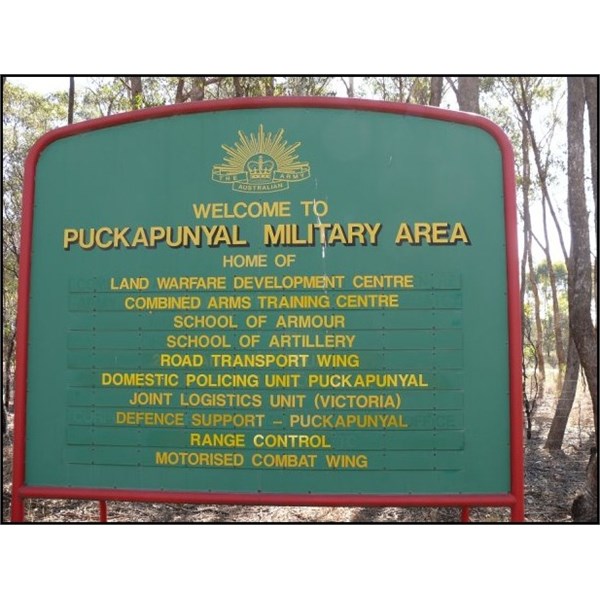
Entrance to Puckapunyal Army Barracks and Training Centre
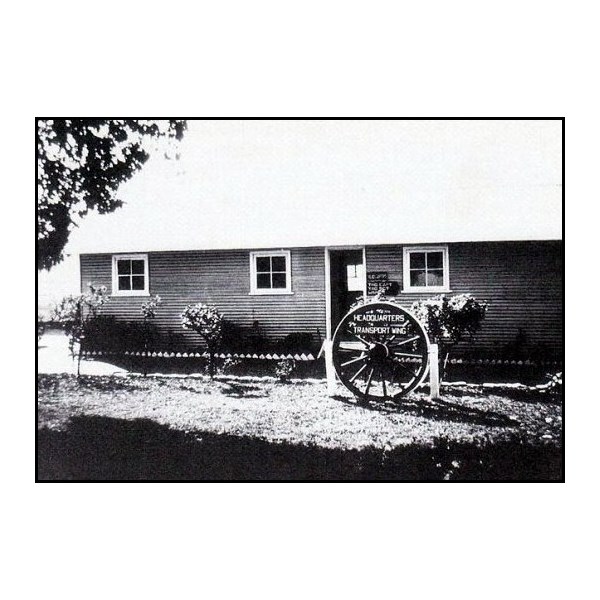
Transport Wing RAASC School Puckapunyal 1956.
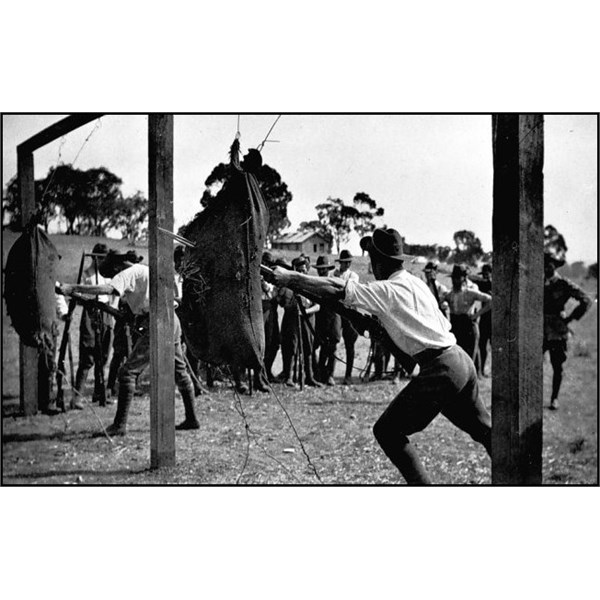
Soldiers at bayonet practice 1926
Apart from the military education and training venues, most accommodation consists of single-storey brick houses with backyards. It contains a primary school, shops, a variety of sporting facilities and a theatre.
The area was first used as a mobilisation and training area during World War I. During the early 1920s, an ordnance store and rifle range were built on the site. In 1939, the area was formally established as Puckapunyal
Camp, the name was taken from the Aboriginal name for a large
hill within the training area. The base was used to train the Second Australian Imperial Force, as other Army establishments were at capacity training Militia units. The original site was too small for wartime training, and an additional 5,700 hectares (14,000 acres) were acquired. As
well as Australian units, the
United States Army's 41st Infantry Division trained at Puckapunyal.
In 1949, the 1st Armoured Regiment was raised at Puckapunyal. The regiment remained based at Puckapunyal until it relocated to
Darwin in June 1995.
During the 1950s, Puckapunyal was host to the 3rd National Service Training Brigade. During the Vietnam War, national servicemen conscripted under the National Service Act 1964 outside of Queensland and New South Wales were sent to Puckapunyal (soldiers from these states trained at Kapooka or
Singleton). They were trained by the 2nd Recruit Training Battalion, with up to 4,000 soldiers at Puckapunyal at any given time.
In the 1980s, the Army undertook a land rehabilitation program, as decades of heavy use had caused major land degradation. By 1988, subsequent land acquisitions had increased the training area to 39,290 hectares (97,100 acres).
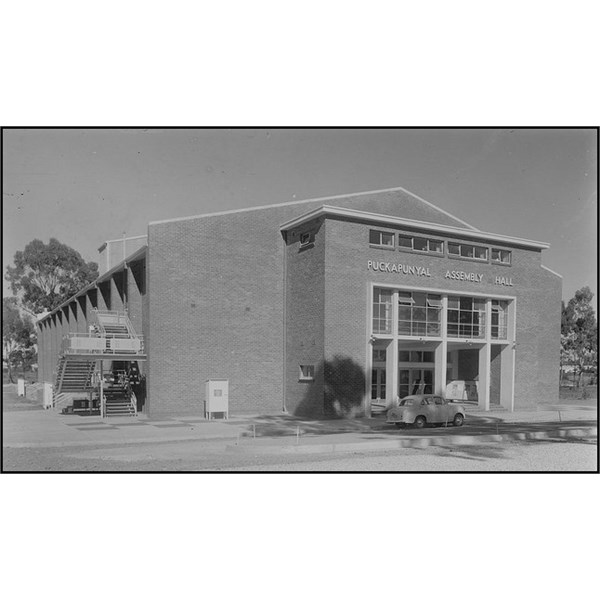
Puckapunyal Assembly Hall 1954
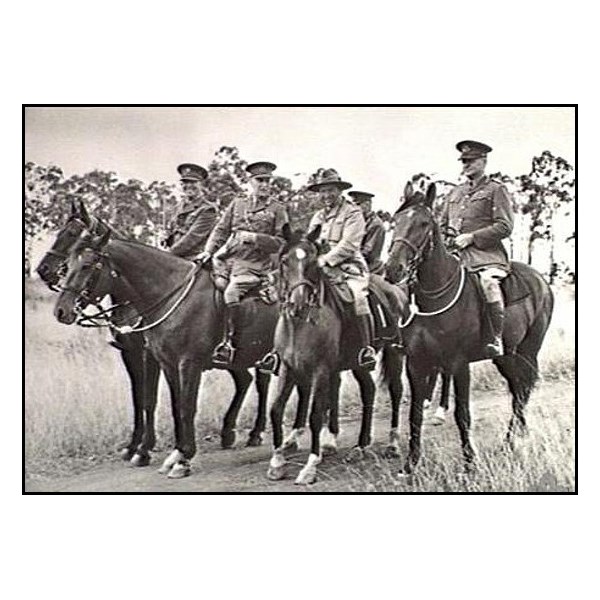
Senior officers on horseback at Puckapunyal in 1940
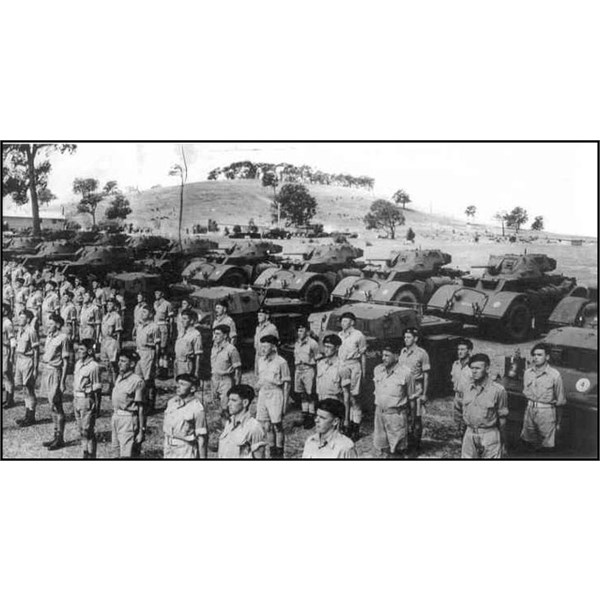
The 1st Australian Armoured Car Squadron assembled at Puckapunyal in January 1946.
The National Service barracks were transferred to the Third Training Group in the 1980s to provide recruit and promotion training for General Reserve soldiers and also promotion training for Reserve Officers attending the Reserve Command and Staff College. This continued until the closure of the Training Group in June 2000.
During 1999 and 2000, some 1000 citizens from Kosovo were housed in the Training Group barracks as part of a temporary protection program in support of the NATO activity in the province. They returned to Kosovo once the situation there had stabilized.
The Puckapunyal Military Area (PMA) experiences cool to cold winters, when most of the average annual rainfall of 596 mm occurs, and dry, warm to hot, summers. The site is characterised by a series of rocky hills and ridges trending north to south, with the highest parts around Mount Puckapunyal (413 m) and Mount Kappe (384 m). The soils are mainly duplex, having low natural fertility and water holding capacity, with smaller areas of deep alluvium. Surface drainage is oriented towards the north and north east, with surface runoff flowing into the
Goulburn River. All streams in the PMA are seasonal.
The RAAC Memorial and Army Tank Museum now has more than 70 Armoured Fighting Vehicles on display in Hopkins Barracks, the
home of Australian Armour at Puckapunyal, Victoria. Covering an area of over 4000 square metres the museum is one of the largest armour museums in the Southern hemisphere.
Army History Unit is a direct command unit of Army Headquarters (AHQ), under the control, for administration purposes, of the Chief of Staff AHQ. As a sub unit of the Army History Unit, our mission is to preserve, exhibit and interpret armoured vehicles, artefacts, icons and memorabilia in order to promote and commemorate Australia's Light Horse and Armoured
heritage. With this in mind we have more than just vehicles on display; we have two unique halls devoted to the history, people and technology associated with the Light Horse and the modern armoured corps.

One of the first tanks to come to Puckapunyal in the early 1950's on the knife edge
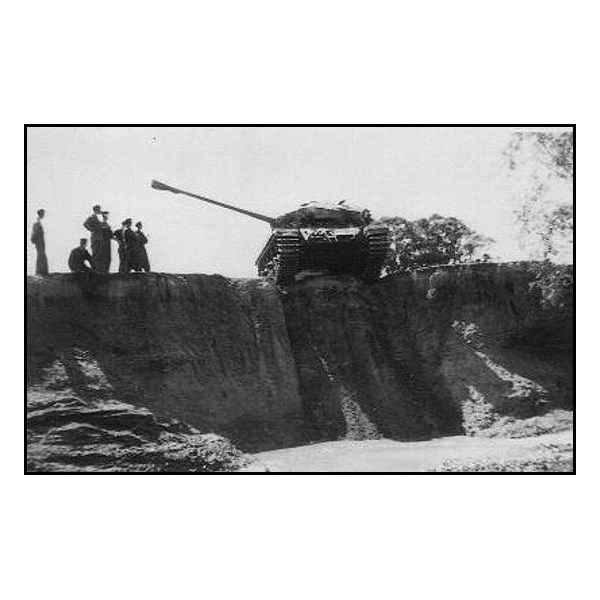
Centurion facing a vertical drop at Puckapunyal 1956.
Australia's cavalry and armoured forces have fought in all the key conflicts of the 20th century including the Boer War, World War 1, World War 2, Vietnam, and peacekeeping missions in Somalia and Rwanda. The museum has recently been involved in documenting the RAAC's involvement in East Timor.
.